Nine-in-ten voters with children in public schools say making sure school meals are healthy and nutritious for children in their community is a priority, according to a new Morning Consult national tracking poll commissioned by the International Dairy Foods Association (IDFA). Ninety-two percent of these parents also indicated that they believe providing milk in school meals is important to a child’s daily nutritional intake, while 84 percent supported inclusion of low-fat flavored milk in public school meals following messaging.
Low-income parents and those who participate in federal nutrition programs express even stronger concern for the health of school meals, which are the most nutritious meals consumed by American school-aged children. Sixty-two percent of the parents who participate in the Special Supplemental Nutrition Program for Women, Infants, and Children (WIC), 56 percent of those who participate in the Supplemental Nutrition Assistance Program (SNAP), and 50 percent of those who make less than $50,000 per year say making sure school meals are nutritious and healthy should be a top priority.
Key results from the poll are below, and the full results of the survey are accessible here.
Jump to:
- Nine-in-ten voters with children in public schools say making sure school meals are healthy and nutritious for children in their community is a priority.
- Ninety-two percent of these parents also indicated that they believe providing milk in school meals is important to a child’s daily nutritional intake.
- Following messaging, 84 percent of voters with children in public schools support including low-fat flavored milk in public schools for children in their community.
- Sixty-two percent of the parents who participate in the Special Supplemental Nutrition Program for Women, Infants, and Children (WIC), 56 percent of those who participate in the Supplemental Nutrition Assistance Program (SNAP), and 50 percent of those who make less than $50,000 per year say making sure school meals are nutritious and healthy should be a top priority.
- Eighty-seven percent of voters with children in public schools believe white milk is healthy for their children to consume in school, second only to water.
- Nine-in-ten voters with children in public schools (91%) found the following message on providing milk to children for public school meals in their community convincing:
- “Milk contributes to stronger and healthier bones, lower blood pressure, and reduced risk of cardiovascular disease. Milk is the leading source of calcium, vitamin D, and potassium for American children ages 2 to 18.”
- Three-fourths of voters on federal nutrition programs (76%), SNAP participants (78%), and WIC participants (74%) with children in public schools believe it is important to have low-fat flavored milk options in school meals.
- One-third of voters with children in public schools find whole milk (36%) and 2% milk (34%) to be the most nutritious. Only four percent believe skim milk (4%) is the most nutritious.
- Voters with children in public schools believe low-fat flavored milk and fruit juice are equally as healthy for children in their community to consume in school.
Nine-in-ten voters with children in public schools say making sure school meals are healthy and nutritious for children in their community is a priority.

Ninety-two percent of these parents also indicated that they believe providing milk in school meals is important to a child’s daily nutritional intake.
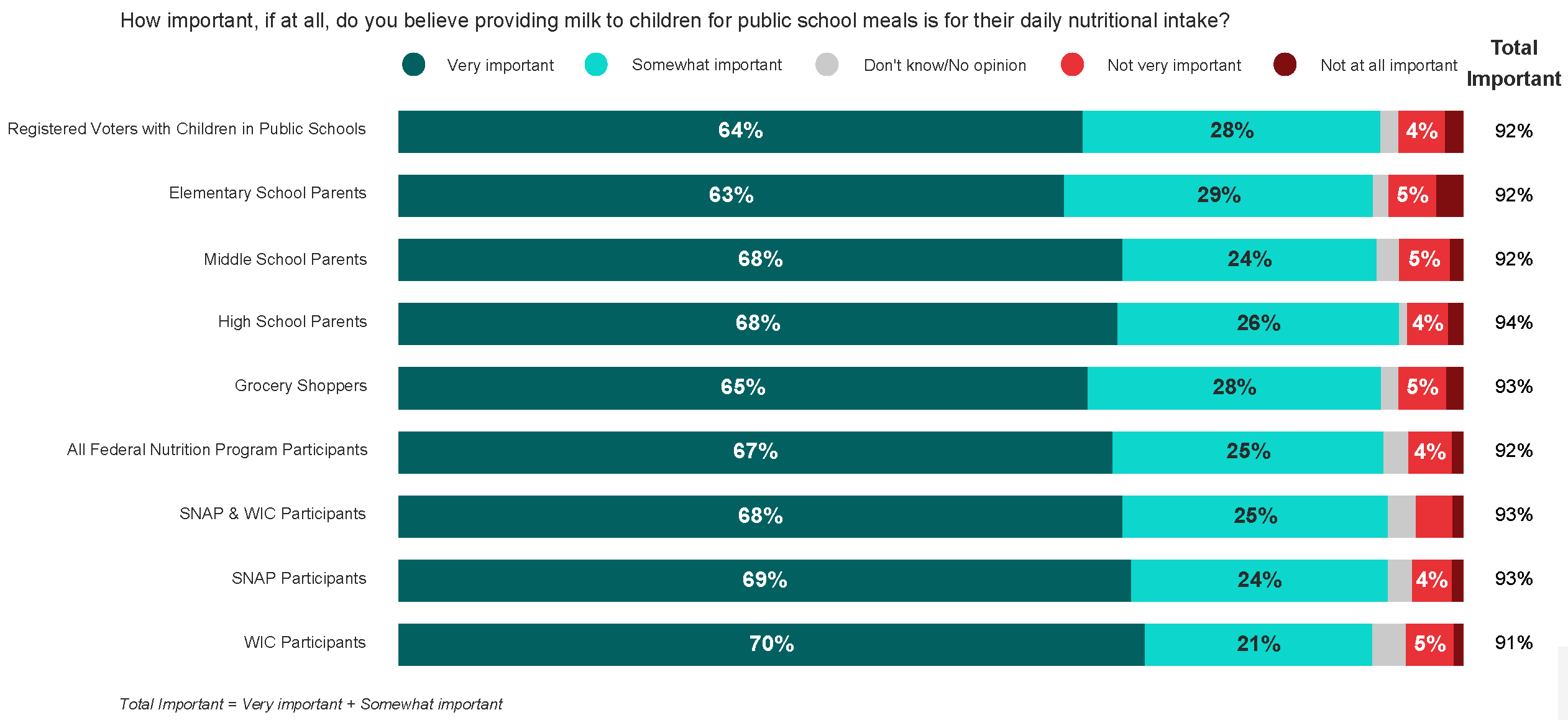
Following messaging, 84 percent of voters with children in public schools support including low-fat flavored milk in public schools for children in their community.
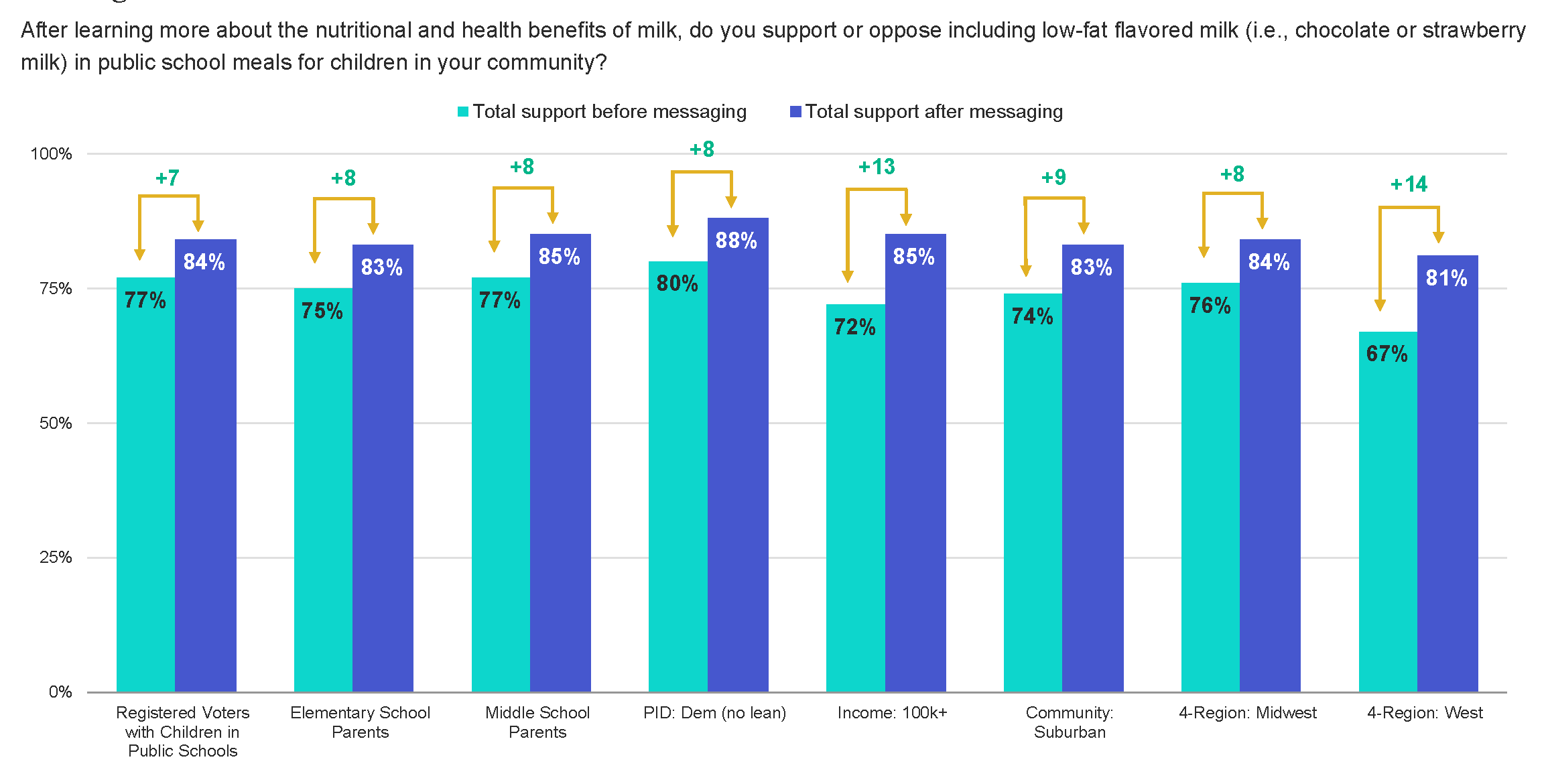
Sixty-two percent of the parents who participate in the Special Supplemental Nutrition Program for Women, Infants, and Children (WIC), 56 percent of those who participate in the Supplemental Nutrition Assistance Program (SNAP), and 50 percent of those who make less than $50,000 per year say making sure school meals are nutritious and healthy should be a top priority.

Eighty-seven percent of voters with children in public schools believe white milk is healthy for their children to consume in school, second only to water.
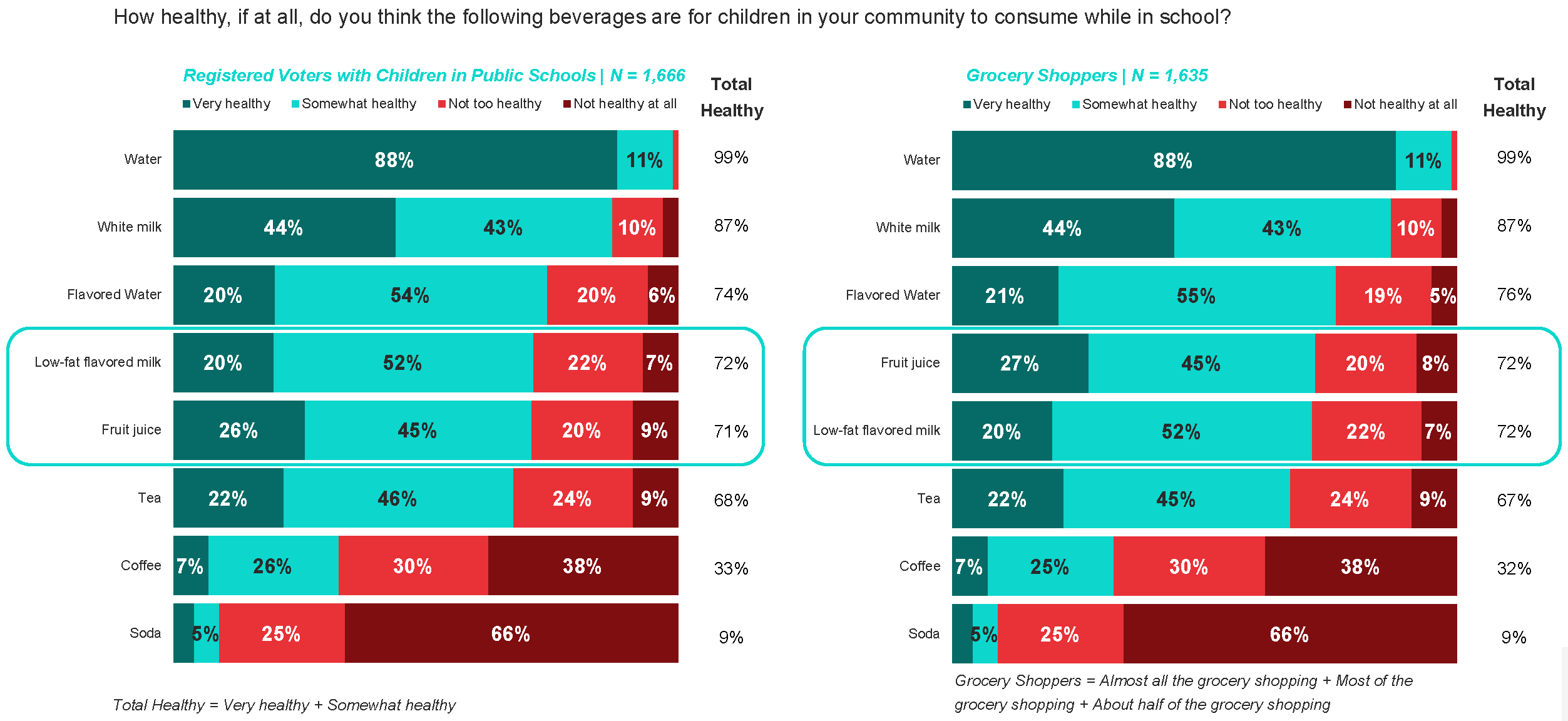
Nine-in-ten voters with children in public schools (91%) found the following message on providing milk to children for public school meals in their community convincing: “Milk contributes to stronger and healthier bones, lower blood pressure, and reduced risk of cardiovascular disease. Milk is the leading source of calcium, vitamin D, and potassium for American children ages 2 to 18.”
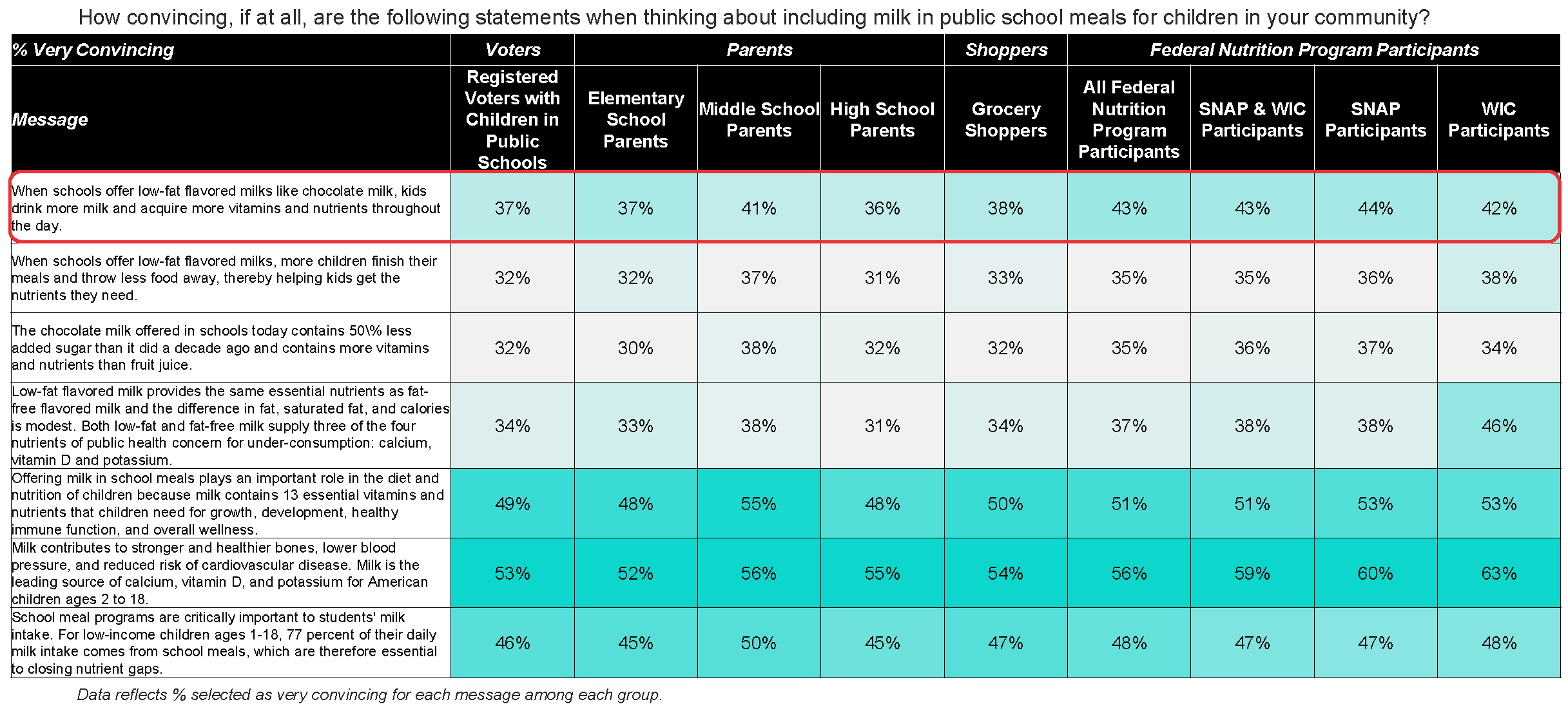
Three-fourths of voters on federal nutrition programs (76%), SNAP participants (78%), and WIC participants (74%) with children in public schools believe it is important to have low-fat flavored milk options in school meals.
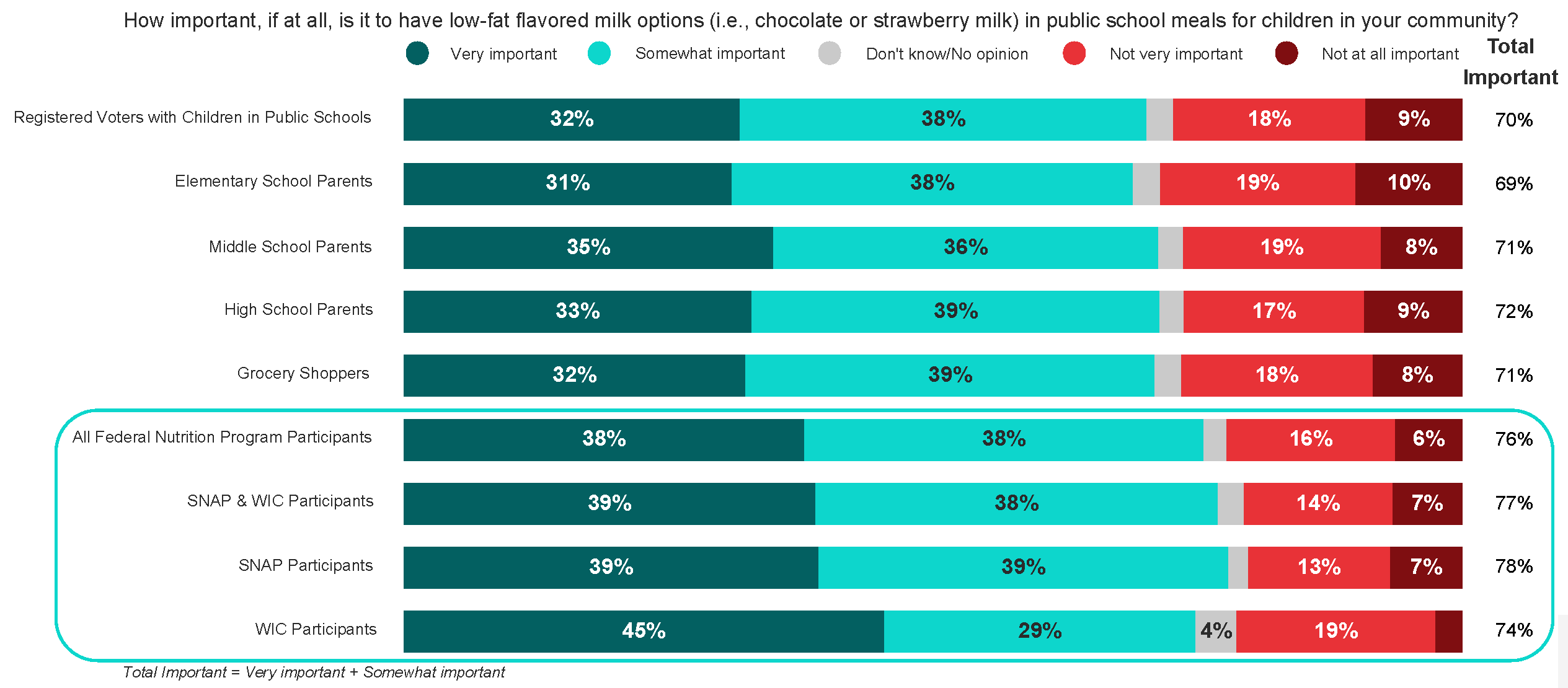
One-third of voters with children in public schools find whole milk (36%) and 2% milk (34%) to be the most nutritious. Only four percent believe skim milk (4%) is the most nutritious.
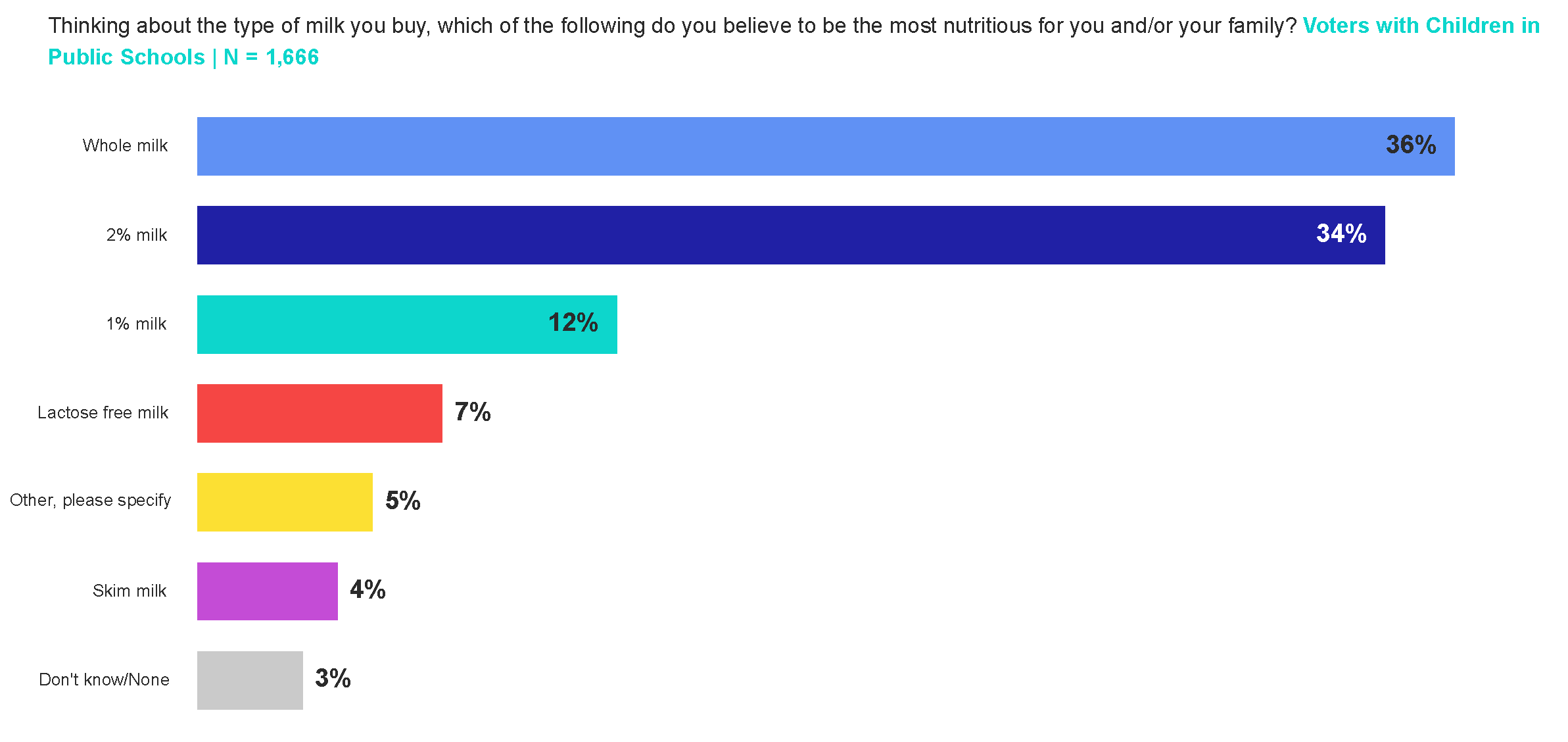
Voters with children in public schools believe low-fat flavored milk and fruit juice are equally as healthy for children in their community to consume in school.

